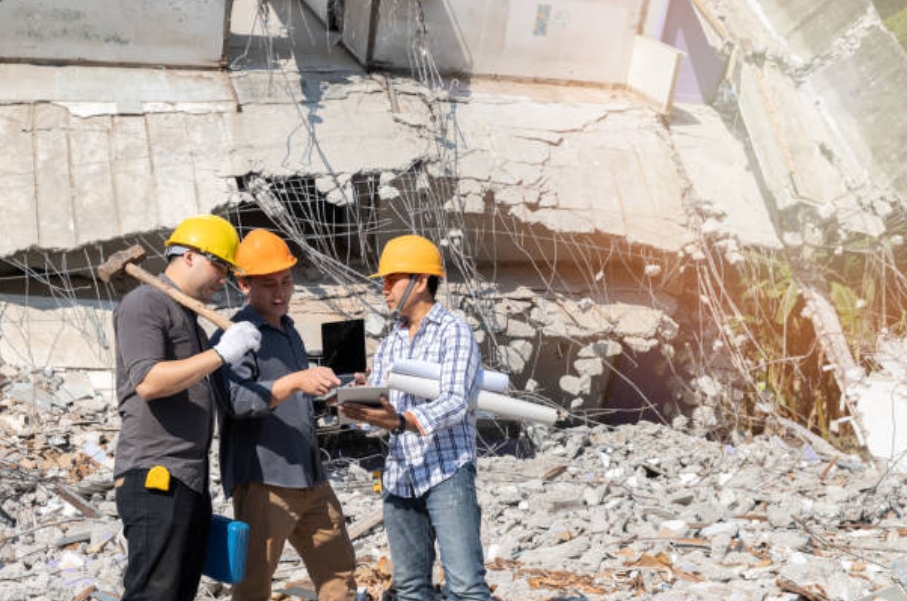Demolition Dynamics: Balancing Efficiency with Environmental Stewardship

The demolition industry plays a crucial role in urban development and revitalization projects. Demolition contractors are at the forefront of this field, tasked with the responsibility of safely and efficiently tearing down structures that have outlived their purpose. However, as the world becomes increasingly conscious of environmental concerns, the demolition industry faces the challenge of balancing efficiency with environmental stewardship.
In this article, we will explore the role of a demolition contractor in this delicate equilibrium, emphasising the need to strike a harmonious balance between efficient demolition practices and environmental responsibility.
Contents
The Role of Demolition Contractors
Demolition contractors are the linchpin of any demolition project. They are responsible for overseeing the entire process, from the initial planning stages to the final debris removal. Their role encompasses a wide array of tasks, including site assessment, project planning, equipment selection, and execution. A demolition contractor is also responsible for ensuring that the demolition process adheres to safety regulations and environmental guidelines.
1.Site Assessment and Project Planning
Before any demolition project begins, a comprehensive site assessment is crucial. Demolition contractors meticulously evaluate the structure, its surroundings, and any potential hazards. This assessment helps in devising a strategic plan that ensures the safety of workers, nearby residents, and the environment.
Project planning involves deciding the most appropriate demolition method. Depending on the structure, contractors may opt for implosion, mechanical demolition, or deconstruction. Each method has its unique advantages and environmental considerations, and the choice should be made with care to balance efficiency and environmental impact.
2.Equipment Selection
Demolition contractors must select the right equipment for the job. This decision can significantly impact both the efficiency and environmental footprint of the project. Modern equipment, such as high-reach excavators and crushers, can enhance efficiency by reducing the time and labour required for demolition. Simultaneously, the choice of equipment must consider emissions and fuel consumption, striving for a sustainable balance.
The Environmental Challenge
While efficiency in demolition is essential for project timelines and cost-effectiveness, the environmental impact is a growing concern. The demolition process generates a substantial amount of waste, including concrete, steel, wood, and hazardous materials like asbestos. Disposing of this waste in an environmentally responsible manner is vital to minimise harm to ecosystems and communities.
1.Waste Management
Effective waste management is one of the primary challenges for demolition contractors. Responsible disposal, recycling, or repurposing of demolition debris can significantly reduce the environmental footprint. Many materials can be salvaged and recycled, contributing to sustainability goals and reducing the demand for new resources.
2.Hazardous Materials
Demolition contractors often encounter hazardous materials like lead-based paint, asbestos, or PCBs (polychlorinated biphenyls). Proper identification, removal, and disposal of these substances are crucial to protect workers, nearby residents, and the environment. Specialised training and equipment are necessary to handle hazardous materials safely.
Striking the Balance
Balancing efficiency with environmental stewardship is the cornerstone of responsible demolition. Demolition contractors face the challenge of meeting project deadlines and budgets while minimising environmental impact. Achieving this balance requires a multi-faceted approach.
1.Sustainable Practices
Demolition contractors are increasingly adopting sustainable practices to reduce their environmental footprint. This includes using eco-friendly construction equipment, implementing dust and noise control measures, and minimising emissions through fuel-efficient machinery. These practices not only benefit the environment but also improve the overall image of the industry.
2.Recycling and Repurposing
One of the most effective ways to reduce the environmental impact of demolition is to prioritise recycling and repurposing. Contractors can salvage materials like concrete, metal, and wood, diverting them from landfills. Recycled materials can be used in future construction projects, conserving natural resources and reducing the carbon footprint.
3. Public Engagement
Demolition contractors should engage with the community and stakeholders to foster transparency and environmental responsibility. Open communication channels can help address concerns and build trust. Additionally, involving the community in recycling initiatives or repurposing efforts can create a sense of shared responsibility for environmental stewardship.
Techniques That Demolition Contractors Use To Ensure Balance Between Environmental Stewardship and Efficiency
Demolition contractors employ a variety of techniques and strategies to strike a balance between environmental stewardship and efficiency in their operations. These techniques are essential for minimising the environmental impact of demolition projects while meeting project timelines and budgets.
1.Selective Demolition: One of the primary techniques used by demolition contractors is selective demolition. Instead of tearing down an entire structure, contractors carefully dismantle and remove specific components or materials. This approach allows for the salvaging of valuable materials like steel, concrete, and wood, reducing the amount of waste sent to landfills. Selective demolition also helps preserve historical or architectural elements of a building when required, aligning with environmental and cultural preservation goals.
2.Waste Recycling and Repurposing: Demolition contractors prioritise waste recycling and repurposing. They establish partnerships with recycling facilities to process materials such as concrete, metal, and wood recovered from demolition sites. Recycled materials can be used in future construction projects, conserving natural resources and reducing greenhouse gas emissions associated with new material production. This technique not only minimises waste but also aligns with sustainability objectives.
3.Dust and Emission Control: To mitigate environmental concerns related to dust and emissions, demolition contractors implement advanced dust and emission control measures. This includes using water sprays to suppress dust during demolition, employing low-emission equipment and machinery, and complying with air quality regulations. These measures not only protect the environment but also improve air quality for workers and nearby residents.
4.Community Engagement: Effective communication and community engagement are vital techniques for balancing environmental stewardship with efficiency. Demolition contractors work closely with local communities to address concerns, provide information about project timelines, and gather input on environmental considerations. By involving the community in decision-making processes, contractors build trust and foster a shared commitment to environmental responsibility.
Conclusion
Demolition contractors play a pivotal role in shaping the urban landscape. However, as environmental concerns become increasingly prominent, they must find ways to balance efficiency with environmental stewardship. Through sustainable practices, responsible waste management, and community engagement, demolition contractors can strike this delicate equilibrium.
The two case studies presented illustrate that each demolition project is unique, requiring a customised approach that considers the specific challenges and environmental goals. By embracing sustainable practices, recycling and repurposing materials, and actively involving the community, demolition contractors can contribute to a more environmentally responsible and efficient urban development process.
In the ever-evolving world of construction and development, the role of demolition contractors remains indispensable. Their ability to adapt and innovate while maintaining a commitment to environmental stewardship will be crucial in shaping a sustainable future for our cities and communities.





